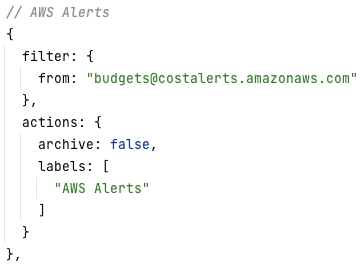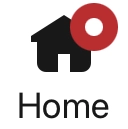
An Exploitative Economy of Attention
The world of tech runs on an exploitative economy of attention. Apps, devices, and technology experiences are designed to extract as much value out of us as possible. It’s true: when you’re not paying for something, you and your data are the product. Companies are making money through selling our data or channeling our time and attention into advertising revenue.
The longer you hold our attention, the more profitable you become. Experiences that result in a constant drip of dopamine create desire. Dark patterns, such as deploying little red bubbles that we’ll do anything – anything – to get rid of, keep us addicted. (One of the most egregious is LinkedIn continually adding new red bubbles to the “Home Feed”. Try logging in, going to the Home Feed, then going somewhere else, like your messages. It comes back.)

I’ve been feeling it taking a toll on my mental health. I’m embarrassed to look at my screen time report each week. I feel pretty down when I think about the books I could have read, people I could have seen, things I could have done instead of things like email and social media.
What is one to do?
You might think that there’s no easy answer. And I agree. I don’t think there is. It’s going to be hard. But I do think that most hard problems can be broken down into smaller problems. And smaller problems tend to be more approachable.
So, I started with email.
Starting Small
I noticed that a big draw on my time was email. When I started to search for a job it felt important to be on top of potential recruiter emails. When I started to build The IT Witch, I also wanted to stay on top of potential customer emails. But the challenge was that I had a lot of low to no value emails dropping in my inbox throughout the day. It was exhausting archiving them continually.
I’ve used GMail filters for years. I set up filters to label and archive newsletters, recurring donation receipts, and marketing emails (sometimes I do want those sweet, sweet discount codes). But the interface for managing them is pretty clunky. It’s hard to navigate and find existing filters you want to edit, especially when you have a lot of them. So I fell out of the habit.
I figured that I wasn’t the first person to have this frustration and that there are a lot of developers out there who use Google Workspace. I found a handful of tools, but settled on gmailctl. It works for me because I’m comfortable setting up terminal applications using homebrew and declarative configuration through code. I wouldn’t say that it’s super difficult to learn, but it’s not super accessible to people who aren’t already comfortable in code.
Filter Bankruptcy
I started by declaring bankruptcy on my existing gmail filters. I exported them as .xml through the GMail interface, but wanted to start from scratch. This meant that all email started hitting my inbox. This was helpful for a few reasons:
- I had a strong incentive to learn the
gmailctlsyntax. - I gained a quick appreciation for how much time I was saving myself by setting up a good filter system.
- I created an opportunity to review every stream of email and unsubscribe from things that I really don’t need at all.
Intentional Management of Time
Next, I wanted to think about how to handle emails based on how I wanted to be more intentional with my time. I knew that I didn’t want most regular marketing emails, newsletters, and receipts to hit my inbox. They aren’t urgent. They don’t need my attention. So I started by thinking about when and why I would want to go to email to get certain kinds of information:
- Daily
- Reviewing job alerts from places like LinkedIn, Indeed, Climatebase
- Weekly
- Looking for Arts, Cultural, and Nightlife options when planning my week or weekend.
- Catching up on newsletters like Money Stuff, updates from Yoga with Heather, and the NYT Cooking Newsletter
- Ad Hoc
- Buying Something: Looking for a coupon code or upcoming sale
- Budget Time: Inspecting receipts
- Tax Time: Collecting donation receipts
Then I set up labels that I would use later when setting up the filters:
- Arts and Culture
- Newsletters
- Donations
- Online Orders
- Job Search
Most things that land in my inbox now are things that I want to see when I do check my email. Or they’re 30 seconds away from a well planned label/archived mail jail.
Iterative Process
Once I started afresh with no filters, my general process when checking email would be to look through each message and:
- Unsubscribe if no longer valuable.
- Decide on the most appropriate label (e.g., Donations, Online Orders, Newsletters)
- Decide whether futures messages should be archived or kept in the inbox for immediate review
- Write or update a filter in
gmailctlto cover the case.
Sometimes, for filters that I want to be sure are 100% correct, there are some options:
- I’ll set a reminder for myself to verify that the filter behaves as expected.
- I’ll start with just setting the filter to assign the intended label and then if it works, I’ll add the
archive: trueaction later. - For those of you who want,
gmailctldoes support writing your own test cases, which is a little overkill for my use cases. So I haven’t done this. But I do appreciate the commitment. :-)
Has it helped?
It’s been a mixed bag. On one hand, I certainly spend a lot less time sorting through messages in my inbox. Because there are fewer messages, I also spend less time in my inbox overall.
On the other hand, I don’t think that the number of times that I check my inbox throughout the day has materially changed. I still struggle with that deep-seated, dopamine-driven urge to check it constantly. The job search for full time employment and work to find new customers for my consulting business doesn’t help!
But I do think that setting up a reliable, trustworthy system is a good step in breaking out of this habit. And I don’t think that I can just ditch email.
Any Challenges?
The gmailctl script runs locally on my laptop, so I can’t currently make changes while mobile. But that doesn’t really bother me. I’ll just leave messages in my inbox until I’m home and then sort out changes on my laptop. I bet someone has set this up on Github Actions so that it could be done remotely. But again, it’s not really a problem for me.
I don’t code!
I used gmailctl, but just about every email client will have a “rules” system for automating your email management. If you use GMail, you can just the web interface for managing filters. Apple Mail has a pretty powerful system. So does Thunderbird and Outlook. This is less about the specific technology and more about being intentional about what you want from your technology experiences and what you want your relationship with technology to be.
What’s next?
I think the next things to focus on for reclaiming time from email are less technical and more behavioral. A few months ago I wrote about setting up a system for cooking at home more. One of the things that was super helpful for that system was mapping out the things that supported or got in the way of the goal I had. It helped me get everything out of my brain and focus on turning a big problem into smaller problems. I could then explore different options for addressing each item.
I suspect that a big challenge is having had smartphone for the last fifteen years and a smartwatch for the last three. The device itself and most things I access on it are part of the exploitative economy of attention. They’re near me (the watch is literally affixed to my body!) and so it’s hard to ignore them.
I’d like to experiment with putting my phone and watch out of sight when I’m home. But part of me wonders if it’s time to try a Light Phone or something similar.
What have you tried? What has worked?